Ch7 - test questions PDF

| Title | Ch7 - test questions |
|---|---|
| Author | Meera Vanmali |
| Course | Compensation Management |
| Institution | University of Mississippi |
| Pages | 47 |
| File Size | 1.9 MB |
| File Type | |
| Total Downloads | 11 |
| Total Views | 156 |
Summary
test questions ...
Description
MARKETING 15TH PRIDE FERRELL (4156) > CONTROL PANEL > POOL MANAGER > POOL CANVAS
Add, modify, and remove questions. Select a question type from the Add Question drop-down list and click add questions. Use Creation Settings to establish which default options, such as feedback and images, are available for question creation.
Calculated Formula
to
Creation Settings
Chapter 7: Consumer Buying Behavior Question pool for Chapter 7: Consumer Buying Behavior Modify
Add Question Here
Question 1
Modify
Remove
Compare and contrast the three major types of consumer problem-solving processes. Add Question Here
Question 2
Modify
Remove
How does the level of involvement affect the type of consumer problem-solving process that a person uses? Add Question Here
Question 3
Modify
Remove
What can marketers do to reduce cognitive dissonance in a consumer who has just purchased an expensive product? Add Question Here
Question 4
Modify
Remove
Draw and label the consumer buying decision process and include the possible influences on the process. Add Question Here
Question 5
Modify
Remove
Why is it important for marketers to recognize the stages that a consumer goes through in making a purchase decision? Add Question Here
Question 6
Modify
Remove
Identify and describe the five major categories of situational influences. Add Question Here
Question 7
Modify
Remove
In what ways can situational influences affect the consumer buying decision process? Add Question Here
Question 8
Modify
Remove
Discuss how perceptual processes may influence the consumer buying decision process. Add Question Here
Question 9
Modify
Remove
What is Maslow's hierarchy of needs? How does it apply to the consumer buying decision process? Add Question Here
Question 10
Modify
Remove
Why are consumer attitudes an important issue for marketers to study? Can attitudes be changed easily by marketers? Explain. Add Question Here
Question 11
Modify
Remove
In what ways does an individual's personality affect his or her buying behavior? Add Question Here
Question 12
Modify
Remove
Discuss how reference groups and opinion leaders influence purchase behavior. Add Question Here
Question 13
Modify
How does an individual's social class influence the products he or she buys?
Remove
Add Question Here
Question 14
Modify
Remove
Why is it important for marketers to understand the cultural and subcultural influences that may affect the consumer buying decision process? Add Question Here
Question 15
Modify
Remove
Compare and contrast the three major ethnic subcultures in the United States. Add Question Here
Question 16
Modify
Remove
Markets fall into one of two categories. These categories are consumer and business. Add Question Here
Question 17
Modify
Remove
Abercrombie & Fitch is developing a program to get to know its customers. Which of the following is a reason why A&F needs to understand consumer buying behavior? customer's reactions to marketing strategy can impact the firm's success all customers are the same when it comes to buying behavior a firm should create a marketing mix that satisfies customers it helps the marketer predict how consumers will respond to marketing strategies the marketing concept stresses that a firm should know its customers Add Question Here
Question 18
Modify
Remove
Purchasers who intend to use or benefit from the purchased product and do not buy products to make profits are part of the consumer market. end-use consumption group. business market. household purchasing group. organizational market. Add Question Here
Question 19
Modify
Many aspects of consumer buying decisions are affected by the individual's level of involvement. Level of involvement is
Remove
the importance and intensity of interest in a product in a particular situation. the buyer's perception, motives, and abilities. the amount of external search that an individual puts into the decision-making process. the particular circumstance or environment in which consumers find themselves. a combination of an individual's demographic factors. Add Question Here
Question 20
Modify
Remove
Justin is purchasing his third car in the past five years. He has been a car enthusiast ever since he was a little boy. He likes to spend his free time looking at car magazines, going to car shows, and watching NASCAR. Justin's interest in cars is referred to as situational involvement. dynamic involvement. enduring involvement. dynamic buying behavior. situational buying behavior. Add Question Here
Question 21
Modify
Remove
A major determining factor in deciding which type of problem-solving process should be used depends on the individual's intensity of interest in a product and the importance of the product for that person. This is known as an individual's motivational structure. routinized response behavior. level of involvement. cognitive dissonance. evaluative criteria. Add Question Here
Question 22
Modify
Remove
Chloe and Max are searching for a health club to join. This purchase will likely be affected by ___________ involvement. low internal enduring evoked perceived Add Question Here
Question 23
Modify
Remove
Temporary and dynamic factors that result from a particular set of circumstance a consumer is facing when making purchase decisions characterize
enduring involvement. extended problem solving. selective exposure. situational involvement. selective retention. Add Question Here
Question 24
Modify
Remove
The three most widely recognized types of consumer problem solving are: limited problem solving, extended problem solving, and routinized response behavior. extended problem solving, enduring problem solving, and situational problem solving. planned problem solving, impulse buying, and limited problem solving. internal problem solving, external problem solving, situational behavior. responsive behavior, planned behavior, and impulsive problem solving. Add Question Here
Question 25
Modify
Remove
While shopping at a Kroger grocery store, Tom sees a display of his favorite brand of diet cola. He buys a six-pack to take home for the weekend. This purchase process would be described as routinized response behavior. extended problem solving. limited problem solving. situational perception. enduring involvement. Add Question Here
Question 26
Modify
Remove
Which of the following consumer problem-solving processes will probably be used in purchasing toothpaste? Extended problem solving Routinized response behavior Intensive problem solving Limited problem solving Perceptual scanning Add Question Here
Question 27
Modify
Which product listed would
Remove
be purchased through routinized response behavior? Car Desk
Shirt Soft drink Television set Add Question Here
Question 28
Modify
Which of the following buying situations is behavior?
Remove
consistent with routinized response
Ian buying his first pair of basketball shoes Molly buying a new set of tires for her car Aaron buying a new fishing rod and reel Stephanie buying bottled water Bryan buying a new software program Add Question Here
Question 29
Modify
Stacy is going to the store to buy a gallon of milk. She will her consumer decision-making process.
Remove
use ___________ in
routinized response behavior limited problem solving extended problem solving perceptual scanning evaluation of alternatives Add Question Here
Question 30
Modify
Remove
Routinized response behavior is what a consumer does when purchasing an unfamiliar product. buying frequently purchased, low-cost items that need little effort. an information search is extensive and may involve consulting with friends and family. buying products that require a moderate amount of time for information gathering and deliberation. he or she enters the problem recognition stage of the consumer buying decision process. Add Question Here
Question 31
Modify
In contrast to extended problem solving, routinized response behavior requires careful deliberation before making a choice. less information about products. more time. considerable thought.
Remove
more money. Add Question Here
Question 32
Modify
Remove
When a consumer purchases products occasionally or needs information about an unfamiliar brand in a familiar product category, he or she will engage in enduring purchase behavior. routinized response behavior. extended problem solving. impulse searching. limited problem solving. Add Question Here
Question 33
Modify
Remove
When a new variety of Kashi whole-grain breakfast cereals is first introduced, consumers will engage in______ when deciding whether or not to purchase this new product. extended problem solving limited problem solving situational solving behavior routinized response behavior automatic processing behavior Add Question Here
Question 34
Modify
Remove
Jenny plans to buy a new swimsuit for her spring break cruise. She has not seen this year's styles and thus will do some comparison shopping before making a purchase decision. Jenny is engaging in routinized response behavior. extended problem solving. limited problem solving. impulse buying. intensive problem solving. Add Question Here
Question 35
Modify
Remove
Kellogg's is introducing a new bran waffle for toasters. Television commercials will be a key element in communicating the benefits associated with this product. Based on that decision, Kellogg's is expecting consumers to engage in what form of problem solving? Routinized response behavior Limited problem solving Extended problem solving Impulse buying Extensive response behavior
Add Question Here
Question 36
Modify
For which of the following products would a consumer solving?
Remove
use limited problem
Detergent Toothpaste Automobile Hair dryer Washing machine Add Question Here
Question 37
Modify
Which of the following purchases would problem solving?
Remove
require a consumer to use extended
Audio equipment Shaving cream Cereal Kitchen napkins Gasoline Add Question Here
Question 38
Modify
Remove
Extended problem solving is the type of consumer problem-solving process that involves no conscious planning but rather a powerful and persistent urge to buy something. is the most complex problem-solving behavior, which comes into play when a purchase involves unfamiliar, expensive, or infrequently bought products. requires a moderate amount of time for information gathering and search. is the creation and maintenance of a collection of products that satisfy a person's needs and wants. requires very little search-and-decision effort and is practiced when buying lowcost and frequently purchased products. Add Question Here
Question 39
Modify
Remove
Which of the following products would probably require extended problem solving before a purchase? Products purchased frequently Products to be purchased in the future Products that are purchased routinely Expensive products Products purchased as a result of social influences Add Question Here
Question 40
Modify
Jose and Teresa are searching for a new cellular phone. They will which one of the following forms of problem solving?
Remove
engage in
Extended problem solving Limited problem solving Impulse buying Routinized response behavior Intensive response behavior Add Question Here
Question 41
Modify
Remove
An unplanned buying behavior resulting from a powerful urge to buy something immediately is called impulse buying. habitual buying. compulsive response behavior. non-problem solving. cognitive dissonance. Add Question Here
Question 42
Modify
Remove
Marissa goes to Target to purchase school supplies for her two children. As she is approaching the check-out counter, she sees a vase she just has to have and buys it immediately. Marissa's purchase of the vase is an example of limited problem solving. impulse buying. routinized response behavior. addictive consumption. situational involvement. Add Question Here
Question 43
Modify
Remove
Beth Hines is buying furniture for her apartment for the first time. She is spending considerable time and effort comparing the products that different stores offer. Which type of problem-solving process is she using? Selective Intensive Extended Shopping Routinized Add Question Here
Question 44
Modify
Remove
Mark is shopping for a new suit to wear to an important interview. He really wants to impress his prospective employer and is shopping at many stores to find the right outfit. Martin is using which type of consumer problem-solving process? Routinized response behavior Habitual response Information search Extended problem solving Intensive problem solving Add Question Here
Question 45
Modify
Remove
The five major stages of the consumer buying decision process, in order, are information search, establishment of product criteria, evaluation of alternatives, purchase, and postpurchase evaluation problem recognition, information search, evaluation of alternatives, purchase, and postpurchase evaluation. problem recognition, information search, evaluation of alternatives, postpurchase evaluation and purchase. information search, evaluation of alternatives, purchase, trial adoption period, and postpurchase evaluation. problem recognition, purchase, evaluation of alternatives, postpurchase evaluation, and rebuy. Add Question Here
Question 46
Modify
Which of the following statements about the consumer buying decision process is
Remove
?
Consumers progress through the five stages of this process for all limited problem-solving decisions. Although all of the steps in the process are used in all decision processes, the order tends to depend on the customer's level of involvement. The key element of the process that exists in all consumer buying decision processes is the purchase of the product. Once the purchase of a product has been made, the consumer buying decision process is complete. Consumers making limited problem-solving decisions may not go through all five steps of the process. Add Question Here
Question 47
Modify
Remove
Problem recognition occurs when a consumer searches for information to resolve a problem. becomes aware that there is a difference between a desired state and an actual condition. recognizes a need. evaluates her or his purchase.
is exposed to a television advertisement. Add Question Here
Question 48
Modify
Remove
When Julia goes to the first class of her Operations Management course, she finds out that in addition to the textbook she already purchased, she also needs a copy of the book . At which stage of the consumer buying decision process is Julia? Purchase Evaluation of alternatives Problem recognition Information search Prepurchase evaluation Add Question Here
Question 49
Modify
Remove
As Steve is shopping for groceries, he notices a product on the shelf and remembers that he is about to run out of it at home. In terms of the consumer buying decision process, Steve just experienced problem recognition. high involvement. postpurchase evaluation. information search. evaluation of alternatives. Add Question Here
Question 50
Modify
Remove
Within the information search step of the consumer buying decision process, what two primary aspects exist? Consideration sets and evoked sets Personal information and non-personal information Selective retention and selective distortion Internal search and external search Company-produced information and internal information Add Question Here
Question 51
Modify
Remove
As Jeff runs out of shaving cream, he immediately tries to remember what he did the last time this happened. He is engaging in external search. consideration set development. internal search. cognitive dissonance. alternative evaluation.
Add Question Here
Question 52
Modify
Remove
When Trevor realizes his liquor cabinet supply was devastated by last weekend's party, he first retrieves information from his memory about what types of liquor he and his friends like most and then asks the attractive clerk at the liquor store what she would recommend. Trevor started with a(n) _____ search and then progressed to a(n) _____ search. consideration; evaluative focused; broad internal; external routinized; extended self; inclusive Add Question Here
Question 53
Modify
Remove
When, in their information search, consumers focus on communication with friends and relatives, they are utilizing ______ sources. internal personal marketer-dominated direct organizational Add Question Here
Question 54
Modify
Remove
In the consumer buying decision process, the information search stage yields a group of brands that a buyer views as possible alternatives. involves a buyer becoming aware of the need for a product. is not necessary when the buyer is involved in extensive decision making occurs immediately after evaluation of alternatives. is lengthy for routine response buying behavior. Add Question Here
Question 55
Modify
A publication such as
Remove
may be initially used during a(n)
product recognition. evaluation of alternatives. internal information search. external information search. purchase decision. Add Question Here
Question 56
Modify
Remove
When shopping for detergent, Josh looks at Tide, Fresh Start, Surf, and All and chooses the one that is on sale. These four brands make up his _________ set. alternate purchase consideration problem imposed Add Question Here...
Similar Free PDFs

Ch7 - test questions
- 47 Pages

Test ch7 audit - test bank
- 44 Pages

Ch7 - test bank
- 56 Pages

Ch7-practice Questions
- 5 Pages

CH7 - Test bank
- 39 Pages

Mhe connect ch7 questions
- 14 Pages
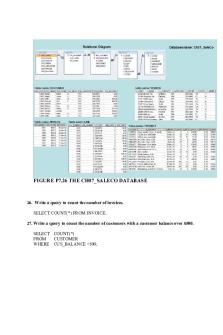
Ch7 - Ch7
- 11 Pages

Test Bank Ch7 with solutions
- 38 Pages
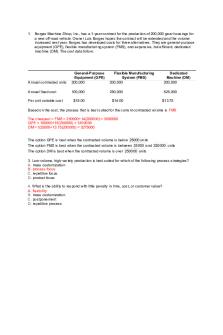
Ch7
- 4 Pages

Test bank ch 7 - pratical ch7
- 29 Pages
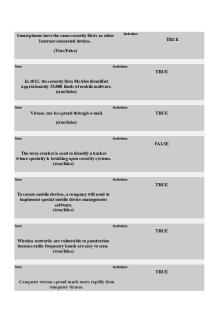
Testbank ch7
- 4 Pages
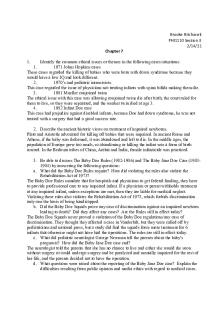
PHI1110 CH7
- 3 Pages
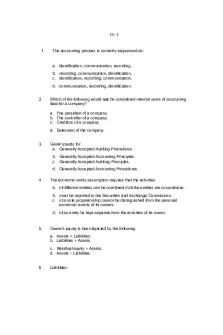
Test, questions
- 6 Pages

Test Questions
- 3 Pages
Popular Institutions
- Tinajero National High School - Annex
- Politeknik Caltex Riau
- Yokohama City University
- SGT University
- University of Al-Qadisiyah
- Divine Word College of Vigan
- Techniek College Rotterdam
- Universidade de Santiago
- Universiti Teknologi MARA Cawangan Johor Kampus Pasir Gudang
- Poltekkes Kemenkes Yogyakarta
- Baguio City National High School
- Colegio san marcos
- preparatoria uno
- Centro de Bachillerato Tecnológico Industrial y de Servicios No. 107
- Dalian Maritime University
- Quang Trung Secondary School
- Colegio Tecnológico en Informática
- Corporación Regional de Educación Superior
- Grupo CEDVA
- Dar Al Uloom University
- Centro de Estudios Preuniversitarios de la Universidad Nacional de Ingeniería
- 上智大学
- Aakash International School, Nuna Majara
- San Felipe Neri Catholic School
- Kang Chiao International School - New Taipei City
- Misamis Occidental National High School
- Institución Educativa Escuela Normal Juan Ladrilleros
- Kolehiyo ng Pantukan
- Batanes State College
- Instituto Continental
- Sekolah Menengah Kejuruan Kesehatan Kaltara (Tarakan)
- Colegio de La Inmaculada Concepcion - Cebu

